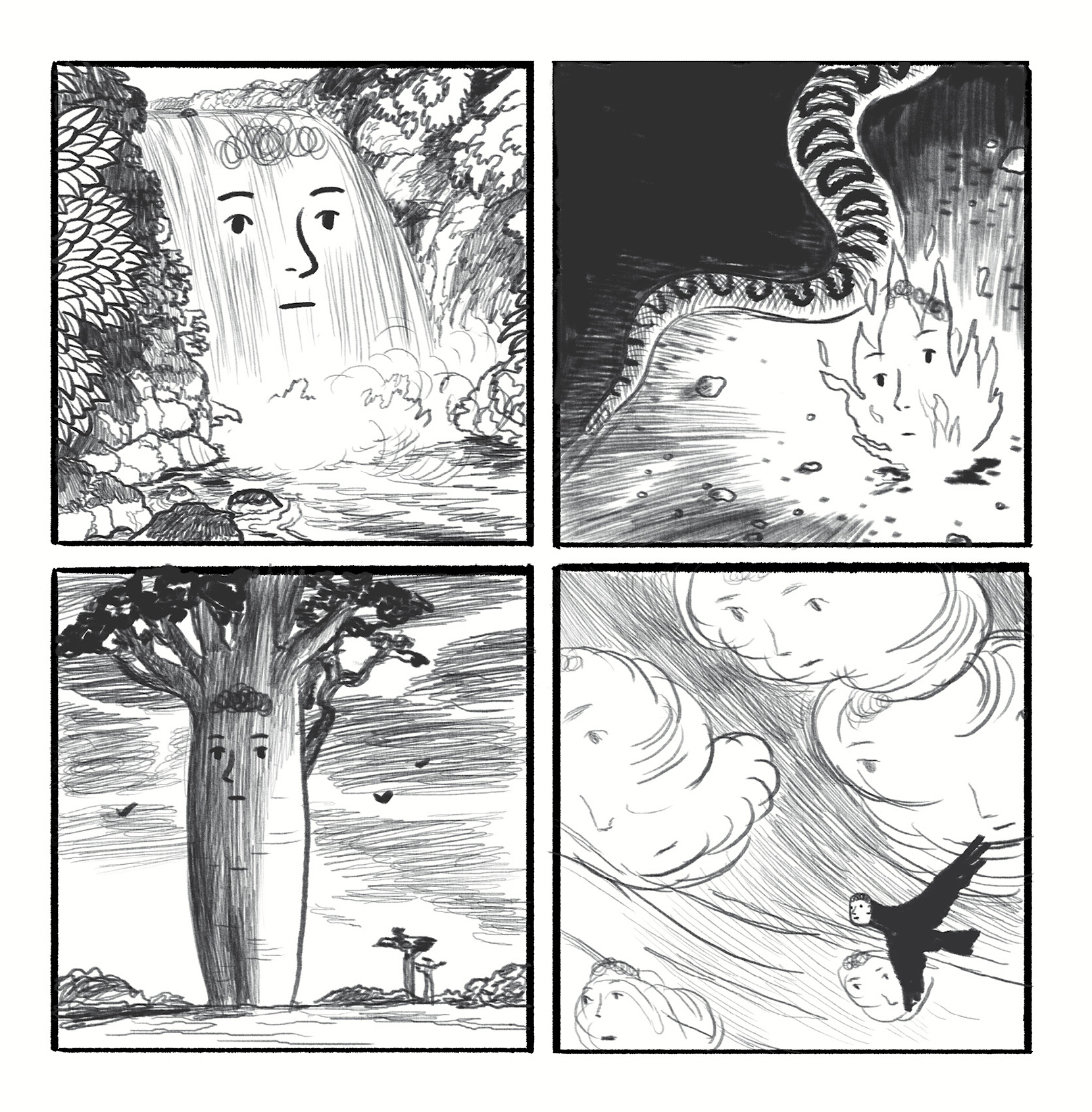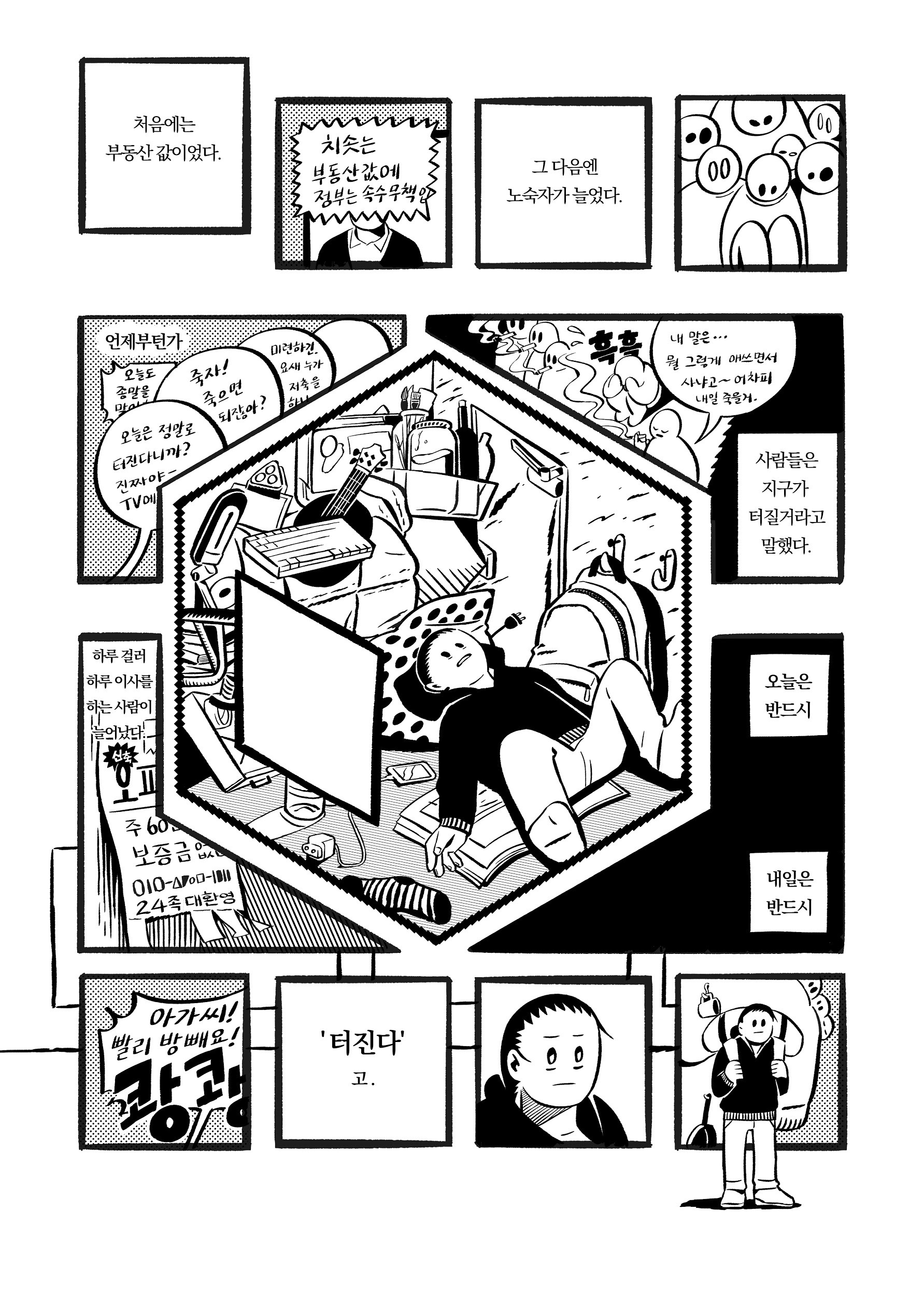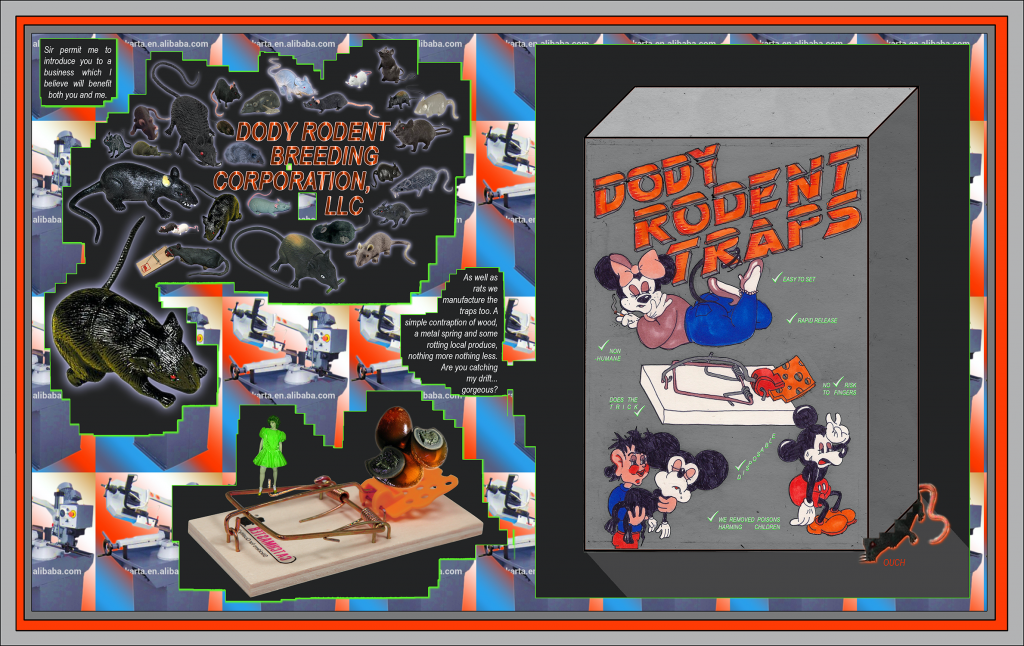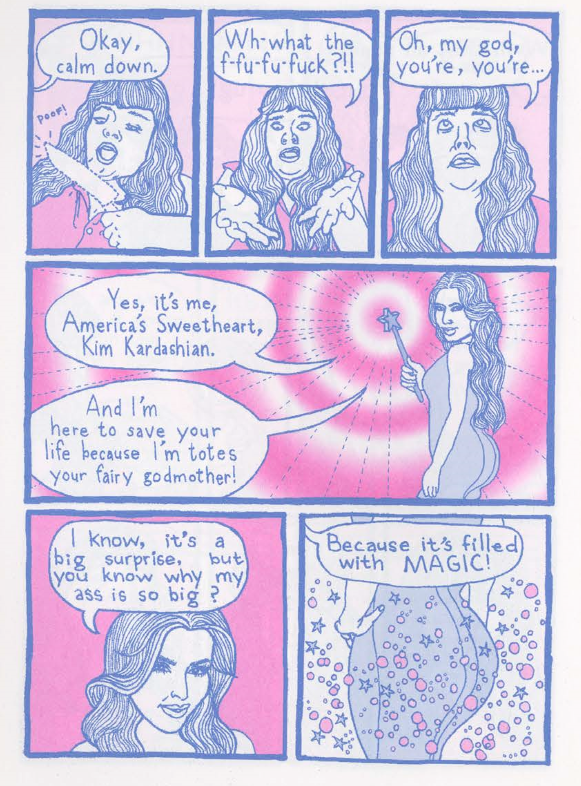Lists aggregate the already known and consolidate power…
Against Lists, Elena Gorfinkel
Lists pretend to make a claim about the present and the past, but are anti-historical, obsessed with their own moment, with the narrow horizon and tyranny of contemporaneity. They consolidate and reaffirm the hidebound tastes of the already heard…
Lists will always disappoint…
Torch your list. If you must count, write as many words about any film not on your list. Read as many words about a woman filmmaker or filmmaker from the global south. Or convert those words and characters into units of time, watching a film never on your list…
This list is not the exception. Besides, I decided to choose artists over works, to make list-making easy. This, in addition to the nature of the best of the “decade” list, does little for the brilliant zines that are usually not on the radar of comics critics who tend to care more about “graphic novels”. Too many little brilliant zines are not collected — especially ones less focused on narrative and characters — too many talented artists leave comics too early, and too many great works are not written about in comics history.
Lale Westvind




Grip (2018-2020), Bus (2019), Mary (2017), Double Head Tour (2016), Yazar & Arkadaş (2016), Hax (2015), “The Kanibul Bal” from Kramers Ergot 9 (2015), Now and Here 1-3 (2014), Hyperspeed to Nowhere (2013)
Lale Westvind is the best comics artist of the decade. Westvind’s comics are visceral, kinesthetic, and somatic. The physicality of strong and muscular women’s bodies — their mass, weight, energy, gravity, power, and velocity — are so intense that you feel like you can directly sense them, not merely see them (thus only indirectly experiencing them). Westvind’s comics are not only visual, they are tactile. Far from fetishized girls from a lot of action films, superhero comics, and manga, these lived bodies exude aliveness and vitality. It is a natural progression from such lived bodies and their extraordinary speed, force, and movement that they create sisterhood. According to Maurice Merleu-Ponty, “the body is the first locus of intentionality, as pure presence to the world and openness upon its possibilities… a living manifestation of action and intention.” Westvind’s women fulfill the possibility of sisterhood by “an open and unbroken directedness upon the world in action; pure fluid action, the continuous calling forth of capacities.” In Grip II, the protagonist builds her own house and Westvind draws the process and the hands at work laboriously. Since “the body’s movement organizes the surrounding space as a continuous extension of its own being,” the construction of a house is the extension of her body, especially her hands, and initiates the search for sisterhood. Speaking of A Room (House) of One’s Own, Grip commemorates women’s domestic and service works while inventing the new language of the medium, just like To the Lighthouse and Jeanne Dielman, 23 quai du Commerce, 1080 Bruxelles did.
Jillian Tamaki



They Say Blue (2018), Boundless (2017), SuperMutant Magic Academy (2010-2015), This One Summer (2014), Indoor Voice (2010)
If I were asked to choose only one artist for the list, it would be Jillian Tamaki. Tamaki represents the very best of comics of the decade. Indoor Voice, a small collection of sketches and short comics released in 2010, predicts the zeitgeist of the decade with precision, noting the rise of feminism with keen observation and a brilliant sense of humor. It is not a coincidence that Boundless depicts the quotidian horror of contemporary society (for example, the fascination on the cult) so precisely. It is an unbelievable accomplishment that an artist created both SuperMutant Magic Academy, a perfectly funny webcomic featuring contemporary youth culture, and This One Summer, a sublimely beautiful graphic novel that the color blue synesthetically captures the sensation of teenage summer vacation, and then goes on to create They Say Blue, the only (picture) book I have ever read that acknowledges and appreciates my black hair..
Patrick Kyle



Roaming Foliage (2018), Don’t Come in Here (2016), Distance Mover (2014)
In The Language of New Media, Lev Manovich proposes that Navigable Space is a new media specific form in addition to Database (in a way which is very similar to comics). The most obvious example of this is how video games propagate as a user navigates space. Although the idea of the journey has been a part of narrative since ancient times, here space itself is the medium, more than a background or environment. The Narrative is an interaction with space. Space is to play in and with. The influence of video games may explain why Navigating Space Comics — comics that are interested in exploring space, rather than character or plot development, space itself is a topic, subject, or motive — has blossomed this decade.
Examples of this are Florescent Mud by Eli Howey, Eight-lane Runaways by Henry McCausland, Wind and Waves by William Dereume, Oliver East, Tim Bird, Maze Quest by Wai Wai Pang and Ed Cheverton, Ben Grills, Walker Tate, Tremblez Enfance z46 by EMG, Tonic by Mathieu Lefèvre, Topoi by Claire Nicolet, Manuel, Juliet Romero; Architecture Comics like Undocumented by Tings Chak, Creation by Sylvia Nickerson, En attendant t’avenue by Francois Henninger, Hyperwar by Francois de Jong, V.A Graham, Lome Lu, Alex Chauvel, 김현민; Structural Comics like Windows Collector by 윤미원, Son Ni, Esther McManus, Alexis Beauclair, Sammy Stein, Laurence Lagier, Nicholas Nade, Antoine Orand. Other salient precursors / influence are Picture Box-artists of the 00s: Jimbo in Paradise and Jimbo in Purgatory by Gary Panter, Multiforce by Mat Brinkman, Ninja by Brian Chippendale, C.F, and Yuichi Yokoyama.
Patrick Kyle’s oeuvre is a paragon of Navigating Space Comics. Kyle’s narratives are dictated not by characters, like other narrative arts, but space. Things and space are inseparable, creating a space-medium (Prostranstvennaya Sreda). Manovich contrasted such a continuous world (literal) view with discrete “aggregated” video game space, criticizing the latter as something that needs to evolve and develop as a unified aesthetic. Kyle’s space and objects are distinctly aggregated (of collage); nevertheless, they achieved space-medium, answering Manovich’s call.
Ilan Manouach





Les Schtroumpfs noirs (2014), Blanco (2018), Abrege de bande (2018), Un monde un peu meilleur (2018), Tintin Akei Kongo (2015), Shapereader (2015), Noirs (2014), MetaKatz (2013), Katz (2012)
Ilan Manouach employs appropriation to expose the ideology behind mainstream and alternative comics. For example, Katz replaced every animal character in Art Spiegelman’s Maus as cats, criticizing the stereotypical depiction, implied fatalistic viewpoint, and its canonical status as the greatest graphic novel. Manouach’s conceptual comics which espouse that the idea of the work is more important than the work itself without the context are similar to what Counter Cinema strived to do (thus Counter Comics which includes works by Stefanie Leinhos, Christmas in Prison by Conor Stechschulte, Barques by Vincent Fortemps) Furthermore, Shapereader, a tactile comics for the visually impaired, is a stunning feat of inclusivity and reveals the glaring shortcomings of any visual medium.
Francesc Ruiz







Philadelphia Newsstand (2010) [pictured], To Those Who Clean (2018), Lycamobile (2018), The Street (2017), Il Fumetto dei Giardini (2015), Gary (2013), Philadelphia Newsstand (2010), The Paper Trail (2010), Gasworks Yaoi (2010)
Ruiz employs appropriation to subvert the heteronormative history, culture, and “low art” status of comics. Often applying a site-specific locality, Ruiz imagines the “illegitimate”, thus alternative and freer, way of disseminating information with comics, like through religious propaganda, garbage, temporary shops, and newsstands. For example, in To Those Who Clean, as solidarity with the Madrid cleaning operators’ strike, Ruiz distributed Chick-track look-a-like supportive comics across the city. In The Paper Trail, during the Arab Spring, Ruiz produced and distributed green-inked newspaper comics across the city and built a temporary space with a green window so that the authorities could not read the comics through the window. Ruiz’s humorous, homoerotic, and socially aware works show the vernacular potential of comics that has been ignored by the “comics as art” movement of alternative comics.
Mushbuh; Char Esme & Ben Mendelewicz

Mushbuh, 6e (2019), Drone (2018), 310,310 (2017); Char Esme & Ben Mendelewicz, Square Dance at Palms Promenade (2014), Spider’s Pee Paw 1 & 2 (2013); Char Esme, Periplaneta Americana: Prehistoric Portfolio (2017), Queasy’s Smileybean Emporium III: Focus On Beauty (2017), Queasy’s Smileybean Emporium II (2015), Politeness Paradise (2014), Queasy’s Smileybean Emporium I (2013), Secret of Saucers (2013); Ben Mendelewicz, When the Joggers Run the Town: 2013-2015 (2015), I Saw My Career Flash Before My Eyes: 2015-2019 (2019)
The language of contemporary society is comics: we talk online with memes and emojis. The most popular social media platforms — Instagram, Snapchat, and Tiktok — are comics (Tiktok is comics-video). Moreover, Deskilled Comics, comics that are intentionally drawn in an ugly or “deskilled” way, represent the very visual culture of today’s internet: like the aforementioned meme, the essential visual language of today; early 10’s Tumblr art; “cursed” images; artists like Masano Hirayama and Chris Harnan. Naturally, small publishers interested in the post-internet aesthetics like txtbooks publish comics too. Mushbuh and Char Esme & Ben Mendelewicz have produced the best of the Deskilled Comics. They are ugly, (intentionally) amateurish, repulsive, horrific, and humorous at the same time. They consist of collages, look like they were created in MS Paint, and feature the old and new technology. Their works are the foremost record of the visual culture of the decade in any medium.
Gina Wynbrandt
Someone Please Have Sex With Me (2016), Big Pussy (2015), Self-Actualization (2018)
One of the most prominent but least talked about and under-appreciated genres in comics is Humorous Ugly Girls Comics. From Underground Comix legends like Aline Kominsky-Crumb and Diane Noomin to Alternative Comics masters like Lauren Weinstein (Girl Stories (2016)), this has been one of the longest-running genres in alternative comics. Wynbrandt updates the genre in the age of (post)-internet perfectly: Wynbrandt’s characters’ faces are extremely detailed reminiscent of meme drawings; they feature Justin Bieber, Sailor Moon, video games, and Yaoi.
Aidan Koch



Daughter (2017), After Nothing Comes (2016), Little Angels (2016), Windows from Strapazin (2016), Glass Surfaces and Still Pools (2015), Impressions (2014), Reflections (2014), Blue Period from Sonatina (2013), The Blonde Woman (2012)
Koch is arguably one of the most influential comics artists of the decade in art comics. Koch shines light on negative space, ellipsis, silence, and the unspoken. With these meditative “Slow Comics,” Koch brings a welcome breath to art comics.
Margot Ferrick




Miracle Flight from An Unknown Power (2019), Dognurse (2018), Yours (2017), Spider’s Visit (2012)
The subtle intensity of Ferrick’s handwriting and characters are “affective” in Deleuzian sense: “Affect is the thing before the emotion. We can name emotions, but affect is nameless. Emotion is the actual, affect is the virtual. Affect is a potential where contradictory things exist together. Affects are ambivalent.” Ferrick introduces this new sensitivity and aesthetics of affect to art comics.
Aurélie William Levaux



Coffret Aurélie William Levaux – Menses ante Rosam / Les yeux du Seigneur (2019), Sisyphe Les joies du couple (2016), Le verre à moité vide (2014), Prédictions with Isabelle Pralong (2011)
Women-dominated artistic and cultural activities have long been overlooked as “craft”, in contrast to the high art of painting and sculptures. Yet some crafts, like embroidery for example, have been re-appropriated by female artists. Using this tradition, Aurélie William Levaux draws women’s stories on fabric, often with embroidery: menstruation, pregnancy, birth, mother-daughter relationship, friendships, growing up, love, relationships, domestic works, sisterhood, etc. In addition to their striking beauty, the audacity and complexity of Levaux’ works are unmatched.
Rantan


화의 방향 (2018-2020), 란탄만화 분점 1-4 (2018-2019), 달밤에 24 (2017), 심야수거 (2017), 꿈의 상자 (2017), 성숙의 지표 (2016), PMS (2016), 24시 영업 (2016)
Rantan is the best South Korean comics artist of the decade and one of the best comics artists of the decade in the world. Like Westvind’s works, you can viscerally feel the weight and gravity of Rantan’s women, which is extremely rare in South Korean visuals and its general culture. You rarely see women that do not fit the socially acceptable body type on the streets of South Korea, not because South Korean’s unique healthy diet or culture, but because women’s unruly bodies are despised in this culture. Rantan’s women, though, occupy the space that does not welcome them. Rantan commandingly depicts the existential threat South Korean women feel daily. However, Rantan’s unruly bodies refuse to be objectified and instead become subject, which creates a sense of bodily and narrative agency. Furthermore, Rantan exploits the formal structure of comics so masterfully that it does not feel at all as an “experiment”. Panels intersect as spacetime and narrative do unpretentiously. They transform into tiny studio apartments, rooms, subway cars, and other small spaces allowed for millennials.
Tillie Walden




On A Sunbeam (2018), Spinning (2017), A City Inside (2016), I Love This Part (2015)
Walden created some of the best graphic novels of the decade. In the last ten years, there are very few artists who produced more pages of great comics than Walden. That this talented artist draws female, especially queer, stories is an added bonus, especially for a queer woman like me. In the past, there have been few lesbian/queer romance space opera visual cultural products like TV shows, movies, or comics, except for some avant-garde films such as Born in Flames (1983), Madam X by Ulrike Ottinger (1978), and Superdyke by Babara Hammer (1975) which are all bit different from what we expect from a romance. Additionally, while some of the triggered reactions from alternative comics status quo/old guards (of cis straight white dudes) to the “young female” artist’s success were laughable (due to their insecurities), they remain a tragic reminder of how dated the comics community is and how hostile it still is to minorities. Given all this, I cannot wait for Hollywood to adapt Walden’s oeuvre into a TV series and/or movies and for her to be even more successful.
Society is Nix & Forgotten Fantasy; The Temple of Silence




Forgotten Fantasy: Sunday Comics, 1900-1915 (2011), Society is Nix: Gleeful Anarchy at the Dawn of the American Comic Strip (2013), & The Temple of Silence: Forgotten Works & Worlds of Herbert Crowley (2017)
We tend to read history as teleological. We view early comics as a precursor for later serialized narratives and/or character focused comic strips. We think of avant-garde (experimental and formal) and narrative (and/or character) focused work as a dichotomy. We look for exceptional genii like Little Nemo in Slumberland’s Winsor McCay and The Kinder-Kids’s Lyonel Feininger. These gorgeous reprints show that we were wrong. A lot of early comics exploited the introduction of colours on the large newspaper pages. Indeed, that was why comics were born in the first place. A lot of early comics experimented with the formal qualities of comics, too. Since it was the beginning of the new medium, there were fast turnouts, therefore low risk, and there was no set formula. There was also a lot of influence from other visual arts. In Cinema of Attraction, Tom Gunning suggests that early cinema was not a precursor of later narrative cinema, but its own cinema of attraction as a new medium. These books show that there were comics of attraction as well.
Reprints of Women Artists




Julie Doucet, The Complete Dirty Plotte (2018); Fiona Smyth, Somnambulance (2018); Aline Kominsky-Crumb, Love That Bunch (2018); Jenny Zervakis, The Complete Strange Growths: 1991-1997 (2017); Katerine Collins, The Collected Neil the Horse (2017); Nicole Claveloux, The Green Hand and Other Stories (2017); Sullen Rocca (2016); The Complete Wimmen’s Comix (2016); Dame Darcy, The Meat Cake Bible (2016); Sylvie Rancourt, Melody: Story of a Nude Dancer (2015); M.K. Brown, Stranger Than Life: Cartoons and Comics 1970-2013 (2014); Dorothy Iannone: You Who Read Me with Passion Now Must Forever Be My Friends (2014); Diane Noomin, Glitz-2-Go (2012); Tarpe Mills, Miss Fury: Sensational Sundays (2011); It is Almost That: A Collection of Image + Text Work by Women Artists & Writers (2011); 이진경, 사춘기 (2017), & more.
(Re)publishing is the act of (re)writing a history. While the reprint renaissance began in the 00s, it is only in this decade that many prominent women cartoonists’ works got reprinted. Even then, there are glaring omissions like Complete Dykes to Watch Out For (only “essential”. Can you believe it?) We need far more reprints of women cartoonists’ works. Most of the 70s female Underground Comix that reflected not only the gross misogyny in the field but also the wider cultural influence of Women’s Liberation, or the second wave of feminism, are not reprinted. A lot of women-only anthologies of the 90s that were influenced by the contemporaneous Riot Grrrl and zine culture, or the third wave feminism, are not written in comics history. This is true for every decade. The history of comics is not the objective truth. We are (re) writing the history every minute and we need to be more conscious of this in comics.
Super-Structure




S-S 01 (2012), S-S 1.1 (2012), S-S 02 (2013), S-S 1.2 (2013), SFS: Super False Structure (2013), Forehead (2013), Ruins (2013), S-S 3.1 vehicles (2014), S-S 3.2 Eloge de la fuite (2015), S-S 04 Forms & Monuments (2015), Chrome Noir (2016), S-S 5.1 Camouflage (2017)
Francois de Jonge’s Franco-Belgium anthology (revue) is the best anthology of the decade. Its themes — structure, form, buildings, models, tools, maps, ruins, shelters, monuments, vehicles, speed, etc. — greatly influenced the French fanzine and comics scene including artists who create what I have called French Structural Comics, as well as some North American artists. Comics, other printed matters, and exhibitions come together organically in these works. Topics that reflect the decade, such as expanded, conceptual, counter, gallery, database, architecture, navigating space, internet-influenced, post-apocalyptic, deskilled, slow, and visceral comics are all here. On top of de Jonge’s great taste and vision, the printing is exceptional even among exquisite European fanzines.
Kim Jooha was the associate publisher of 2dcloud between 2016 and 2018. 2dcloud has published the work of Gina Wynbrandt and Margot Ferrick. Kim’s work with the press did not focus on these artists or their work.










Leave a Reply